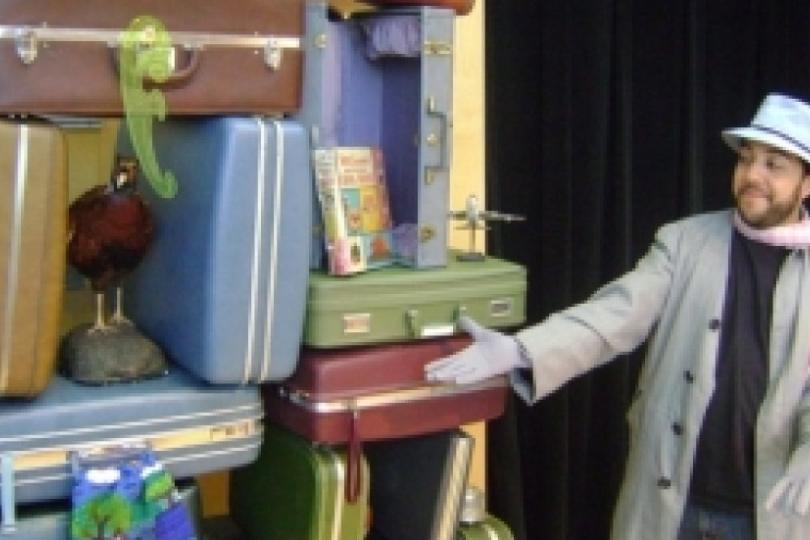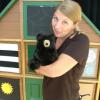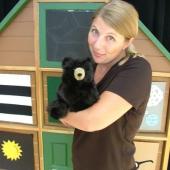Best kept secret
Editorial

Google “the world’s best kept secret” and you’ll find a plethora of the world’s best kept secrets ranging from “cornhole” to “yacht clubs.” By the way, the two examples have nothing to do with each other, but I’m guessing, you could probably play a game of cornhole on a large enough yacht. The phrase “best kept secret” is an overused expression; though I do feel museum theatre is one of those gems that deserves the saying. Simply, not enough people know about it, or rather, not enough theatre artists know about it.
Many local artists may not be aware that the Twin Cities is full of museum theatre; you can find it at the History Center, the Bakken, and many others. The Science Live Theatre Company at the Science Museum of Minnesota is a pioneer in the field of museum theatre, and is celebrating its’ 40th season. Minnesota has no shortage of this seemly “under wraps” art form.
And art does come first for Science Live theatre at the Science Museum of Minnesota (SMM). We hire some of the most gifted actors, directors, playwrights and designers in town, providing a daily space for young artists to get their feet wet; August Wilson was one of SMM’s first playwrights in residence. And, for established artists, museum theatre offers a space to hone their craft. At SMM, a single artist’s talent and work can be enjoyed by hundreds of people on a daily basis. Close to 200,000 people watch a Science Live show each year. This ever-present marriage of science and art is a natural fit for SMM. Theatre artists are avid learners, eager to explore the world and question it; both scientists and artists scrutinize why things are the way they are.
Sure, the shows are educational, but isn’t all art? Art is about communication and every effective form of communication results in some transfer of knowledge. Science Live productions aim to inspire further learning, to peak an interest in a subject and to create a love for life long learning. To achieve this goal museum theatre utilizes the communication skills and talents of theatre artists, who dramatize the conflict, the emotions and the humanity of scientific endeavors. When we connect through art, education follows. If we load a show down with too much science content than we lose the purpose of the piece; it might as well be a textbook.
Our current company consists of twelve actors who work part-time this enables them to pursue more traditional theatrical gigs. With that said, SMM also employs actors to perform traditional demonstrations and presentations; the shows you’ve come to expect at a science museum or center in which a presenter in a lab coat freezes bananas with liquid nitrogen or sets things on fire. So, why use theatre artists instead of scientists, teachers or volunteers for the straight up demonstrations and presentations? For the Science Museum of Minnesota, theatre artists provide another vehicle for bringing science to life. SMM hires theatre artists because they bring storytelling expertise, dramatic through-lines and professional speaking skills to a science demonstration. This set of skills provides the demonstration or presentation with entry points for a variety of learning styles.
We ask that museum theatre actors not only perform plays, puppet shows, presentations and demonstrations; we ask them to interact and mingle with museum visitors, depending on the project, both in character and out of character. Thus the actors we hire also possess a very approachable demeanor and are socially intelligent. Museum actors need to know when to approach a visitor and when to leave them alone and this takes a certain level of social intelligence. We also look for actors who have a strong improv background. And we’re not alone, the Museum of Science and Industry in Chicago employs improvisors too for all their programming. In fact, museums of all types, aquaria and zoos across the world, work with theatre artists. Many of these institutions belong to the International Museum Theatre Alliance (IMTAL).
IMTAL is a non-profit professional association for museum theatre practitioners and supporters. Their mission is to inspire and support the use of theatre and theatrical techniques to cultivate emotional connections, provoke action, and add public value to the museum experience. Actors, performers, educators, directors, playwrights, students and teachers join IMTAL in order to share their work with the museum field.
How does museum theatre differ from traditional? I would argue that there is very little difference. The most common statement I hear from actors new to museum theatre is about how professional the whole program is. We truly aim to treat the artists as the professionals they are. But I’m the one who raised the question, so here are few significant differences between traditional theatre companies and our museum theatre at the Science Museum of Minnesota:
- Actors are not only encouraged, but are required to talk to the patrons after performances.
- Most productions are approximately 15 minutes long. Productions do vary in length from as short as 5 minutes length to 30 minutes long.
- Our catalog of productions is colossal and diverse. We tackle every theatrical genre. So, actors need to be multi-talented and willing in a single shift to perform an assortment of styles. A typical actor shift might look like this: a puppet show, next a ten-minute drama about eugenics, then a storytelling piece and finally a broad comedy.
- Actors perform many one man/woman shows
- Another major difference, as mentioned earlier, actors also perform demonstrations and presentations. Any given day a performer could also deliver a game show, make lava, drop objects from 50 feet above and discuss how nano-technology is searching for treatments for cancer.
- The rehearsal process differs from project to project. Some shows require more research time on the part of the actor while others are more focused on the training of the experiments.
- Actors serve as stage managers too. We run in rep., so most of our company knows the majority of our 15 shows running at any given time.
- I think I’ve made my point. The museum field requires a great deal from our extremely talented and dedicated actors.




